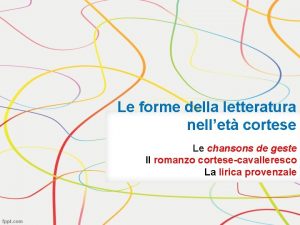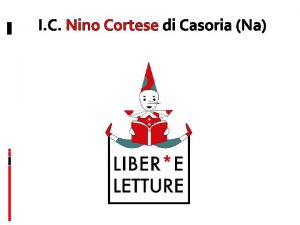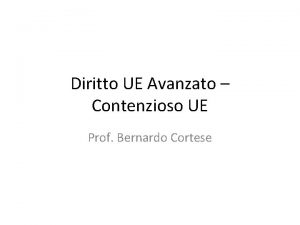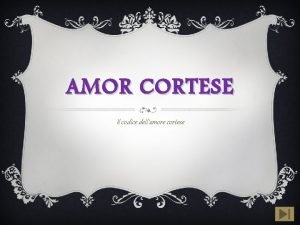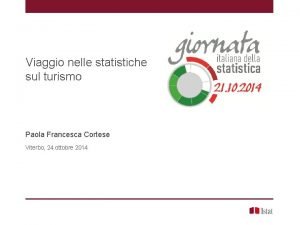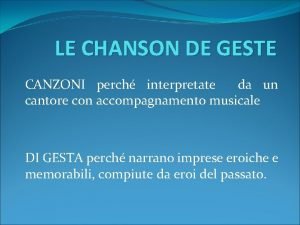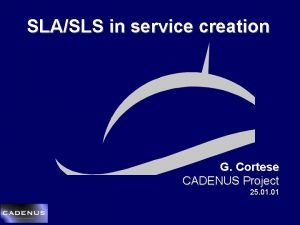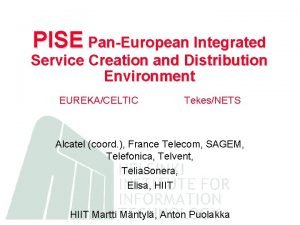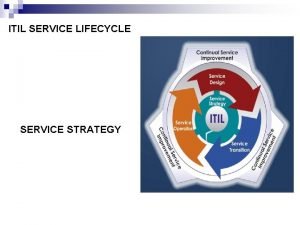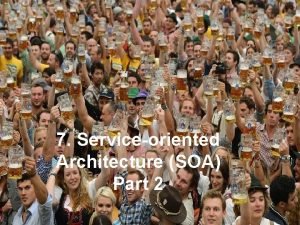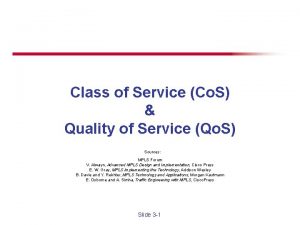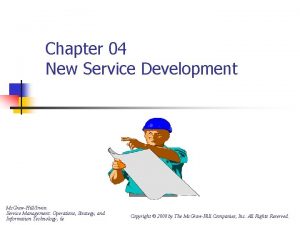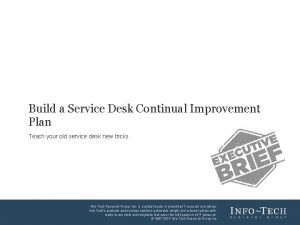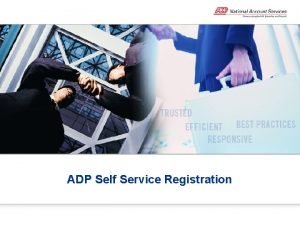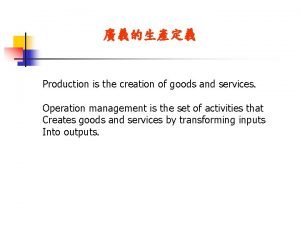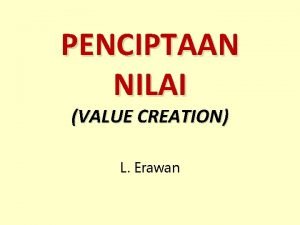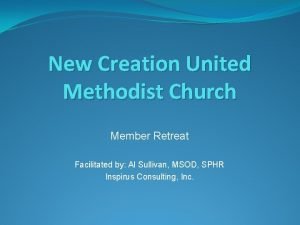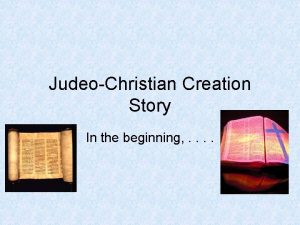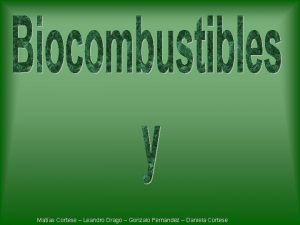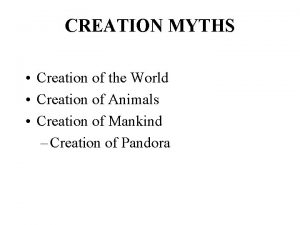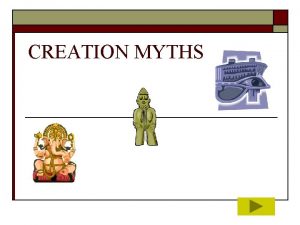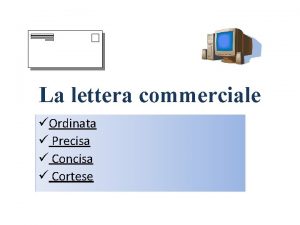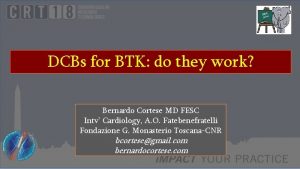SLASLS in service creation G Cortese CADENUS Project














































- Slides: 46

SLA/SLS in service creation G. Cortese CADENUS Project 25. 01

Agenda u. SLA in CADENUS overview u. SLA/ Service Model u. Techniques to achieve SLA-based service creation

SLA in CADENUS u. Goal is Automation of SLA Management • contract negotiation • service provisioning/ activation • monitoring • integrated with resource management u. Service always have a SLA • Service + SLA = service agreements u. SLA/ SLS management vs. Provider’s Business Processes • TMF work • understand impact of dynamic service creation on current SP business processes

End-User Services u. IP Transport services with Qo. S, security features u. Value-Added services offered on top of an IP Network (Voice. IP, multimedia …) u. The end-user in CADENUS can be: • a residential customer • a corporate customer • another provider (using services provided by the first provider)

Levels of SLA support u Insurance Policy Mode • • Measure performance/availability Give credits on SLA violation u Provisioning Mode • • Quote from Verma/ Wjinen presentation (Policy 99) Insurance Policy but 4 customers are not equal. Put classification/rate control/Qo. S devices u Adaptation Mode • • • Provisioning Mode plus Take action on possible SLA violation Allocate or take resources for customers u Integrated Mode • SLA drives automated service fulfillment and service assurance processes

SLA Life-Cycle u. Service Development u. Negotiation and Sales u. Implementation u. Operation and Assessment

SLA ‘Facets’ u. Network vs Application Service u. Dynamic u. Single User Instance vs Aggregated u. Call establishment vs. information transfer u. Technical u. Non Technical • e. g. Average Call Response Time, MTPR, MTPS. . .

Business Scenarios u Automated Service Management in the SP Domain • design - subscription - activation - monitoring • Example: VPN data + ‘corporate voip’ u Service Management in the Customer Domain • self-service provisioning • policies on resources purchased by SP • monitor purchased SLA u Inter-provider negotiation of transport services u Service ‘Retailer’

Service Creation - Converging Views (1) u. Allow rapid introduction of new ‘products’ and new technologies u 2 views for same goal • ‘automated’ service creation 4 in the Operational Support System (OSS) – ‘Time & Costs for introducing a New Service Offering is mainly affected by the impacts on OSSs’ • dynamic service creation 4 in the network uto be integrated !

Service Creation - Converging views (2) ucommonalities • service composition approach • SLA-aware • infrastructure support (events, workflow/ scripting facilities, data repositories …) udifferences • scalability goals • performance goals • technical approach

OSS View: Requirements for service creation u flexible service modeling environment • data structures • processes u support service composition (‘bundles’, commercial offers) u manage a variety of service activation interfaces • telnet, SNMP, Policy, Dynamic Service Creation u process logic separated -> workflow • both automatic and manual activities

OSS View - Service Composition IP ATM Mail High Speed Mobile Access Web E-Transactions x. DSL Communications Technology Applications Operations SLA on Network Call Center Outsourcing Management Distributed Workgroups Customized Problem Handling Tariff Plans Flat Traffic SLA on Applications SLA on Operational Processes

OSS View - OSS and Process Integration Maturity Model 5. Automate Service Activation 3. Take Control of Manual Activities 2. Maintain Service Config. Inventory 1. Maintain Resource & Asset Inventory Service Creation 4. Integrate Horizontal Processes and Automate Tasks

Network View - Dynamic Service Creation u. Phase 5+. . • Have network boxes actively supporting service activation u. See michael’s presentation

Agenda u. SLA in CADENUS overview u. SLA/ Service Model u. Techniques to achieve SLA-based service creation

Purpose of SLA/SLS modelling u. Define a flexible information model • Support implementation of tools to automate SLA management processes • Allow design of 4 new services 4 new commercial offers • Allow mapping to different service architecture/ technology u. To be shared across all CADENUS components u. Identify areas for standardization

Layered Models Customer u Business Model (SLA, Service Offer) • Related to SP Business Processes (e. g. Service Planning and Service Configuration) • Includes end-customer view • Cross-technology (e. g. both ATM PVC and Vo. IP) u Service Model • Both ‘customer-perceived’ services and ‘supporting’ services • Independent of underlying service architecture/ technology (Diff. Serv, MPLS, . . . ) + G e n e r a l i t y - u Resource Model • Resources (network/ application) supporting the service and their configuration Network

Model - Summary SLA / Service Model SLA Template 1 Service Level Objective * 1 1 Service Offer * * CIM_Metric. Definition instance * Quality. Description 0. . 1 Client * Service Component Operational Service 1 Service * * Application Service Dependency * * SAP 0. . 1 Connectivity Service 0. . 1 * CIM_Qo. SService * Qo. SSub. Service Value-added Service * *CIM_Service CIM_Network. Service * * Service. SAPDependency 1 Service. Component * * *Service. Access. By. SAP* 0. . 1 Quality. Description 1 * SAPSAP Dependency CIM_SAP 1 SLA Contract Service Template * Metric * * Service Offer Quality 0. . 1 1 1 CIM_Policy. Rule SLS instance * * Qo. SPolicy. Rule Resource Model 0. . 1 CIM_Forwarding. Service Qo. SConditioning Sub. Service * Infrastructural Service SLS CIM_Conditioning. Service

SLA Management Lifecycle - 1 u. Product/Service Development • Defines Service Templates and related SLA Templates u. Negotiation and Sales • Uses Service Template and SLA Template as input • Delivers an instantiated SLA Contract, including a Service Offer and the related Service Offer Quality

Service Template * * * * u. Describes the Service Offering (i. e. SP’s Catalog of Services) by means of Service Types u. After sales process is instantiated into a Service Offer for a specific Customer (e. g. describing Customer Site, POP and CPE)

SLA Template u Groups together a set of Parameters and Metrics u Related to a specific Service Template u May be used during Customer negotiation to define their required level of service quality u E. g. Customer can choose between different Quality Levels (e. g. gold, silver, bronze) for the same type of Service, or can decide single Parameter values (e. g. Round-trip delay<90 ms) u SLA/Service Templates describe allowed combinations of ‘options’ for a specific SLA_Contract

SLA Contract u. Contract between Customer and Provider - Business nature u. SLA includes * * * * • Description of the Service Offer • Quality Objectives for the Service Offer • Reports • Remedies • Credits • Charges • Escape clauses • . . .

Service Offer u Service instances package provided by the SP to the Customer u Contains a bundle of (1. . N) Service. Components visible to the Customer u Quality. Description relates the Service Offer to requested Service Offer Quality u Examples: IP VPN, Corporate Vo. IP, VOD, Full Business Company

Service Offer Quality u Overall level of Quality agreed in the SLA Contract for the subscribed Service Offer * * u Groups together the Service Quality Objectives set for each Service Component (both high-level and low -level services) visible within the SLA Contract

Service Offer Quality - Example u. Full Business Company • Service * * • • Bundle Quality Objectives (e. g. MTTR, Mean Service Availability) Application Hosting Service Quality Objectives (e. g. Application Availability, Application Response Time, Intrusion Detection Time) IP Access to ASP Service Quality Objectives (e. g. Packet Delay, Packet Loss, Connection Availability)

SLA Management Lifecycle - 2 u. Implementation • Uses the Service Offer and the related • • Service Offer Quality for unbundling purposes Generates all the Service instances for both Client and ‘internal’ services and their related SAPs Generates all the Service Level Objective instances for the Service instances with required Qo. S

SLA Management Lifecycle - 3 u. Implementation • Generation of Policies / Configurations for network / application resources supporting service (CIM_Policy, classes in Resource Model) u. Operation & Assessment • metrics 4 not shown in model

Service * * u Building block of SLA Model u Containment hierarchy allows to bundle low-level services into high-level ones u Client Services are the subset of Services included within the SLA Contract (perceived by the Customer) u Dependency models constraints among Services

Service - Examples u. Simple Services * * • ATM/FR PVC • IP 4 Connection VW PDB • Mail Service u. Composite Services • “Classic VPN” • IP VPN • VOD • Vo. IP • Web Hosting

Connectivity Services u. Services provided only by means of the Network u. Network Services for delivering * * • data • voice • multimedia u. . . over multiple NW technologies u. Examples: • end-to-end connection-oriented NW Services (e. g. FR/ATM PVCs) • IP services (e. g. VW PDB) • combinations (e. g. LAN Emulation and IP Over ATM)

Operational Services * * u May be offered explicitly as extraservices u Qo. P parameters (i. e. MTTR) are typically included within SLAs u Are out-of-scope in this analysis u Examples: • 7 x 24 Help Desk support • Management outsourcing

Application Services * * u Value-added Services (e. g. Content and ASP) and Infrastructural Application Services (e. g. DNS, Firewall) u Value-added Services are built on top of NW-bearer Services (Dependency) u Both are integral part of the managed services (i. e. should be provisioned and monitored)

Service Level Objectives * * u. Contains metrics in support of the SLA u. Related to a specific Service Component u. Individual Service Quality Objectives described in terms of • metric and thresholds • tolerances • actions ? CIM Core Policy Model: “. . . the objectives and metrics (Service Level Objectives, or SLOs), that are used to specify services that the network will provide for a given client. The SLA will usually be written in high-level business terminology. SLOs address more specific metrics in support of the SLA. ”

Service Level Objectives Low-level Service Examples u ATM PVC SLO * * • CLR Forward and Backward • Throughput (i. e. Egress/Ingress cell within PCR) • PVC Availability u IP E 2 E Connection SLO • Oneway (FW) Delay • Jitter • Packet Loss Ratio u Web Server Hosting SLO • Throughput (e. g. Num. of pages x Sec. ) • Web Server Availability

SLO vs. SLS u. Similar Definitions. . . • SLO (“CIM Policy Model”) - “. . . the objectives and metrics (Service • Level Objectives, or SLOs), that are used to specify services that the network will provide for a given client. The SLA will usually be written in high-level business terminology. SLOs address more specific metrics in support of the SLA. ” SLS (“TEQUILA Draft”) - “A Service Level Specification (SLS) is a set of parameters and their values which together define the service offered to a traffic stream by a DS domain. ” u. For Diffserv SLO = SLS u. CADENUS model and tools allow/ require specialization • tequila SLS is a specialization of Connectivity Service and related SLO for IP Diffserv

SAP * * u Logical or physical element located on the interface between Customer and Service Provider domains u SAP related to a Client Service represents the point at which the Service is delivered u Used to model dependencies between Services spanning multiple SP’s domains u Examples: • CPE or Edge UNI • Interdomain gateway NNI • Ingress/Egress Interface

Model - Comments (1) u. A ‘core’ model to be extended for each new service and technology mapping introduced • Extensibility through combination of metadata (Service Template, SLA Templates) and subclassing u. A Conceptual Model • Needs mapping rules to a development model (e. g. XML, directory services, SQL)

Model - Comments (2) u Some freedom to SP using it to model its service catalog • Set of Services are not predefined 4 some ‘examples’ will be defined (vpn, virtual leased line, . . ) 4 Tequila SLS • Services are composed into higher-level services and/ or commercial offers u Mapping Rules (not shown in model) create the link from Service to its implementation • device configuration 4 policies 4 configuration scripts for dynamic svc creation • workflow • . . .

Agenda u. SLA in CADENUS overview u. SLA/ Service Model u. SLA management - Areas of work

CADENUS Architecture

Architecture (SM) + mapping of Model

Areas of technical work related to SLA management in CADENUS u Access Mediator • negotiation of service/ SLA • ‘retailer’ interface • standard data structure for SLA u Service Design Environment • see next slides u SLA fulfillment • see next slides u SLA Assurance • Semi-automated translation of SLA to ‘plan’ for SLA monitoring • Integration with Resource Mediator for SLA goals maintenance

SLA Fulfillment u Semi-automated translation of SLA to network configuration ‘rules’ u Verify correctness of network configuration with respect to SLA objectives u Network-based mechanism for service activation u Workflow/ Intelligent Agent architecture to coordinate plan execution u Integration with Resource Mediator for SLA goals maintenance

Service Design Environment u Sw engineering techniques/ process to • • • allow non-technical people to design new services/ SLA template ease the translation of a new service template into a WEB application (part of access mediator) allow (technical) people to define mapping rules to policy/ service creation/ SLA monitoring ‘scripts’ u Metadata for describing service/ SLA parameters and relationships • Full automation feasible ? • Some Prototyping 4 JSP, Javascript for GUI 4 Mapping to internal unique format for service/ SLA via XSLT

Relationship to other works u. TMF • SLA Mgmt Handbook u. DMTF CIM/DEN • Network/ BGP Model u. Tequila SLS u. IETF/ CIM Policy

Sodalia S. p. A. - Via V. Zambra 1, 38100 Trento - ITALY Tel: +39 0461316111 - Fax: +390461316546 - Internet: www. sodalia. com
 Canzoni cavalleresche
Canzoni cavalleresche Le forme della letteratura cortese
Le forme della letteratura cortese Ic nino cortese
Ic nino cortese Bernardo cortese
Bernardo cortese Cultura cortese
Cultura cortese Natura dell'amore e regole del comportamento amoroso
Natura dell'amore e regole del comportamento amoroso Francesca cortese
Francesca cortese Differenze chanson de geste e romanzo cortese
Differenze chanson de geste e romanzo cortese Passata è la tempesta odo augelli far festa
Passata è la tempesta odo augelli far festa G cortese
G cortese Convservice
Convservice Phases in itil life cycle
Phases in itil life cycle Itil life cycle
Itil life cycle 8 step improvement
8 step improvement Enduring service intensifiers examples
Enduring service intensifiers examples Evolution of soa
Evolution of soa Mpls class of service
Mpls class of service New service development in service marketing
New service development in service marketing Service owner vs service manager
Service owner vs service manager Service improvement plan for service desk
Service improvement plan for service desk Adp self registration
Adp self registration The elohim creating adam
The elohim creating adam Scale and proportion in architecture
Scale and proportion in architecture Verily in the creation of the heavens and earth
Verily in the creation of the heavens and earth Creation myth definition
Creation myth definition Cash drain ratio
Cash drain ratio Anangu dreamtime stories
Anangu dreamtime stories Trade diversion and trade creation
Trade diversion and trade creation Trade diversion and trade creation
Trade diversion and trade creation Australian aboriginal creation myth
Australian aboriginal creation myth Octopus deploy linux tentacle
Octopus deploy linux tentacle Which is the most enduring free trade area in the world?
Which is the most enduring free trade area in the world? The creation of goods and services
The creation of goods and services Pengertian value creation
Pengertian value creation Penciptaan nilai adalah
Penciptaan nilai adalah Panorama creation
Panorama creation Gmail id creation
Gmail id creation Ict content tools
Ict content tools Aldersgate united methodist church
Aldersgate united methodist church Money supply and credit creation
Money supply and credit creation Mikmaq creation story
Mikmaq creation story Secondary brand
Secondary brand Knowledge creation and knowledge architecture
Knowledge creation and knowledge architecture Integrity of creation reflection
Integrity of creation reflection Judeo christian creation story
Judeo christian creation story Separation procedures
Separation procedures Frankenstein plot zanichelli
Frankenstein plot zanichelli
